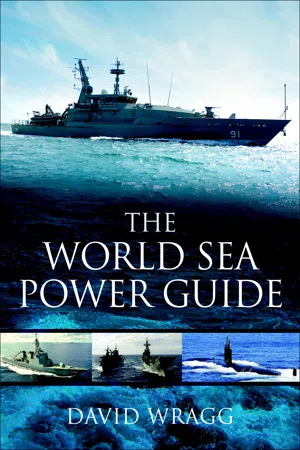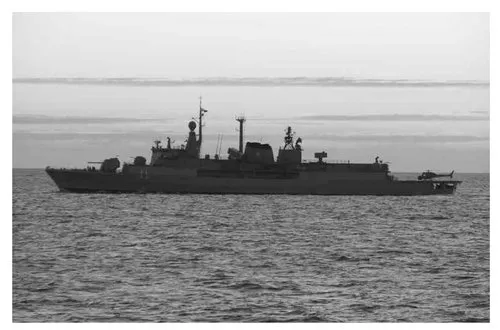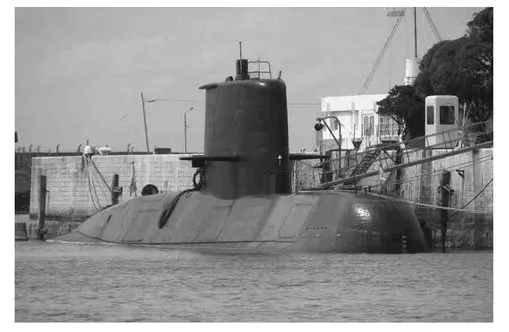
- 288 pages
- English
- ePUB (mobile friendly)
- Available on iOS & Android
eBook - ePub
The World Sea Power Guide
About this book
Compiled by the author of Janes Air Forces of the World, this book is a must for naval experts and enthusiasts. In one volume the reader will find the composition and details of all naval elements of a staggering 137 nations armed forces including paramilitary organizations as the US Coast Guard Service. The book starts with an introduction based on the situation today and the response of the leading maritime powers. This is an interesting period with considerable uncertainty for the Royal Navy following the Strategic Defense Review. Many other countries, including Australia and Spain are boosting their naval strength to achieve strategic reach, while piracy has become a major problem in at least four different areas of the world. In each case, the history is followed by details of current fleet sizes, composition and deployments.
Frequently asked questions
Yes, you can cancel anytime from the Subscription tab in your account settings on the Perlego website. Your subscription will stay active until the end of your current billing period. Learn how to cancel your subscription.
At the moment all of our mobile-responsive ePub books are available to download via the app. Most of our PDFs are also available to download and we're working on making the final remaining ones downloadable now. Learn more here.
Perlego offers two plans: Essential and Complete
- Essential is ideal for learners and professionals who enjoy exploring a wide range of subjects. Access the Essential Library with 800,000+ trusted titles and best-sellers across business, personal growth, and the humanities. Includes unlimited reading time and Standard Read Aloud voice.
- Complete: Perfect for advanced learners and researchers needing full, unrestricted access. Unlock 1.4M+ books across hundreds of subjects, including academic and specialized titles. The Complete Plan also includes advanced features like Premium Read Aloud and Research Assistant.
We are an online textbook subscription service, where you can get access to an entire online library for less than the price of a single book per month. With over 1 million books across 1000+ topics, we’ve got you covered! Learn more here.
Look out for the read-aloud symbol on your next book to see if you can listen to it. The read-aloud tool reads text aloud for you, highlighting the text as it is being read. You can pause it, speed it up and slow it down. Learn more here.
Yes! You can use the Perlego app on both iOS or Android devices to read anytime, anywhere — even offline. Perfect for commutes or when you’re on the go.
Please note we cannot support devices running on iOS 13 and Android 7 or earlier. Learn more about using the app.
Please note we cannot support devices running on iOS 13 and Android 7 or earlier. Learn more about using the app.
Yes, you can access The World Sea Power Guide by David Wragg in PDF and/or ePUB format, as well as other popular books in History & Military & Maritime History. We have over one million books available in our catalogue for you to explore.
Information
NATIONAL ENTRIES
ALBANIA
Population: 3 million
Land Area: 11,097 square miles (28,741 sq.km.)
GDP: $9.23bn (£6.0bn), per capita $2,987 (£1,939)
Defence Exp: $434m (£282m)
Service Personnel: 48,570 active, plus 210,000 reserves
ALBANIAN NAVY BRIGADE
Although Albania became independent in 1912 after four centuries of Turkish rule, it was not until 1928 that a navy was formed, the Royal Albanian Navy, under the first, and last, monarch, King Zog. Initially it was commanded by an Italian captain, although it is not known whether he was still in command when Italy invaded in 1939, by which time there were just four patrol boats, all US-built.
After the Second World War, Albania became part of the Communist Bloc, but withdrew from the Warsaw pact in 1961 and the Soviet Navy withdrew from its base at Pashaliman. While the service had more than 100 craft by this time, most of them were small, Chinese-built, Huchuan-class torpedo boats, as well as some ASW patrol vessels, and the only vessels of any importance were four ex-Russian Whiskey-class submarines. The submarines remained in service until 1998, but their operational effectiveness was very low for most of the preceding twenty years.
In more recent years, the Albanian Navy Brigade has been part of the Albanian Joint Forces Command and is effectively subordinate to the army. The vessels operated are mainly patrol boats donated by Italy and the USA, while the status of the last of four Soviet-built minesweepers is uncertain.
Today the Albanian Navy Brigade has an unstated number of personnel but has its headquarters at Durres and a second base at Vlore, the latter being the former Soviet naval base of Pashaliman. There are four Dutch-built Damen Type 4207 patrol boats, while complementing the ANB is the Albanian Coast Guard, with as many as twenty-nine small patrol craft. Unusually, the ANB is also responsible for lighthouses and other navigational aids.
ALGERIA
Population: 35.4 million
Land Area: 919,590 square miles (2,381,741 sq.km.)
GDP: $161bn (£104.5bn), per capita $4,553 (£2,956)
Defence Exp: $5.67bn (£3.68bn)
Service Personnel: 147,000 active, plus 150,000 reserves and 187,200 paramilitary
ALGERIAN NATIONAL NAVY
Algeria became independent from France in 1962 and immediately started to create its own armed forces out of the National Liberation Army, taking over former French bases, and initially received assistance from the Soviet Union, Czechoslovakia and Egypt. During its early years the service looked to the Eastern Bloc countries for assistance, and introduced Soviet Osa-class missile-armed boats to control its territorial waters. This meant that by the late 1970s, when the ANN had 3,800 personnel, it operated six Komar-class and six Osa-class boats with ‘Styx’ AShM, with a further sixteen smaller craft and three minesweepers.
In more recent years, procurement has been spread more widely and the country has been building smaller naval vessels itself. There have been exercises with NATO countries and visits by ships from these countries, including the NATO Rapid Reaction Mine Force. Aircraft have also been introduced, including Kamov helicopters, but again, in recent years there has been interest in Western products, especially from AgustaWestland.
Today the ANN has 6,000 personnel. It has three Soviet-built Mourad Rais-class (Soviet Koni-class) with ‘Gecko’ SAM, two RBU 6000 rocket launchers, two twin 76mm guns and one of these has two twin ASTT while the others are being modernised to the same standard. Augmenting these ships are three Soviet-built Rais Hamidou-class corvettes, with SS-N-2C AShM and ‘Gecko’ SAM; three Djebel Chenona-class corvettes with ‘Saccade’ AShM and a 76mm gun. There are still a few Osa-class vessels amongst the eighteen patrol craft. There are four Soviet-built submarines, two of which are ‘Kilo’-class and two are Improved ‘Kilo’-class, all with six torpedo tubes. There are just three logistics and support ships.
Reports that three British-built Nakhoda Ragami-class corvettes, rejected by the Royal Brunei Navy, were sold to Algeria in 2008 have so far been unsubstantiated.
The main bases are Mers el Kebir and Algiers, with additional bases at Annaba and Jijel.
There is also a small paramilitary coastguard with about 500 personnel and more than forty small patrol boats.
ANGOLA
Population: 19 million
Land Area: 481,226 square miles (1,246,369 sq.km.)
GDP: $85.1bn (£55.3bn), per capita $4,479 (£2,908)
Defence Exp: $2.74bn (£1.78bn)
Service Personnel: 107,000 active, plus 10,000 paramilitary
ANGOLAN NAVY
Angola became independent from Portugal in 1975 and a small navy, Marinha de Guerra (MdG), was formed with four ex-Portuguese patrol craft left behind by the colonial power. The country came under Cuban influence shortly afterwards and over the next fifteen years a number of Soviet minor warships were introduced, including Osa-class patrol boats with SS-N-2 AShM.
Today the MdG is the smallest of the country’s armed forces with about 1,000 personnel, five patrol craft and a number of smaller patrol boats, mainly for riverine use. There are reports that a small number of fast attack craft will be delivered from Germany, although this is uncertain. Aircraft are manned by the air force. The main base is at Luanda.
ANTIGUA AND BARBUDA
Population: 88,550
Land Area: 170 square miles (449 sq.km.)
GDP: $1.1bn (£0.71bn), per capita $12,413 (£8,060)
Defence Exp: $33m (£21.4m)
Service Personnel: 170 active, plus 75 reserves
ANTIGUA AND BARBUDA DEFENCE FORCE
Since independence in 1967, Antigua and its dependency Barbuda have maintained a small defence force, with forty-five of its personnel in the small navy, which has two small patrol craft, Dauntless and Swift.
ARGENTINA
Population: 40.7 million
Land Area: 1,084,120 square miles (2,807, 857 sq.km.)
GDP: $382bn (£248.1bn), per capita $9,396 (£6,101)
Defence Exp: $2.60bn (£1.69bn)
Service Personnel: 73,100 active, with no formal reserves
ARGENTINE NAVY
The Argentine revolution that saw the country fight for its independence from Spain started in 1810 and a small navy was formed by the Irishman William Brown. On 17 May 1814, this small force defeated Spanish ships in the Battle of Montevideo.
Known officially as the Armada de la Repu’blica Argentina (ARA), or ‘Navy of the Argentine Republic’, the service embarked on wholesale modernisation towards the end of the nineteenth century, by which time its largest vessels were five armoured cruisers. Two battleships were built in the United States and commissioned in 1915. The country remained neutral in both world wars, but in 1940 the ARA claimed to be the eighth largest navy in the world and the largest in Latin America. At this time, a new base had opened at Mar del Plata, and in addition to the two US-built battleships, which survived until the mid-1950s, there were five cruisers, including the British-built La Argentina, commissioned in 1938; sixteen destroyers, of which seven were new ships of the Buenos Aires-class; as well as three Italian-built submarines and two survey ships.

The German-built MEKO 360 destroyer La Argentina is powerfully armed with a 127mm gun, Exocet AShM and anti-submarine torpedo tubes. Four of these ships provide the mainstay of the Argentine Navy. (Armada Argentina)
Post-war, Argentina joined the Organisation of American States in 1948, and became eligible for US military aid, including the transfer of two Brooklyn-class cruisers from the USN in 1951. Further changes took place in 1956, when ten F4U Corsair fighter-bombers arrived, joined in 1957 by Lockheed Neptune MR aircraft, Consolidated PBY-5A Catalina amphibians and Martin PBM-5 Mariner flying boats. Grumman F6F-5 Hellcat fighter-bombers, JRF Goose and J2F-2 amphibians followed, with North American T-6 Texan, Vultee 13T-13 and Beech AT-11 trainers. The fighter-bombers were for the aircraft carrier Independencia, formerly HMS Warrior, which arrived in 1958. The Royal Netherlands Navy carrier Karel Doorman, another former British carrier, was bought in 1969, renamed Veinticinco de Mayo and Independencia was withdrawn in 1970.
During the late 1970s, the ARA was operating the aircraft carrier Veinticinco de Mayo; two ex-US Brooklyn-class cruisers, known as the Belgrano-class; two British-built Type 42 anti-aircraft destroyers; while the rest of the destroyers were all ex-USN, including three Fletcher-class destroyers, three Allen M. Sumner-class and a Gearing ‘FRAM II’-class; two King-class corvettes; two Salta-class (Type 209) submarines, built in sections in Germany and assembled in Argentina, and two ex-USN Guppy-class submarines. There were also five fast attack craft. Later, three French-built corvettes were added.
For some years, the Argentine Republic had claimed sovereignty over the Falkland Islands and South Georgia, although some distance from the mainland of Latin America and never occupied by Spain during the colonial era. Known to the Argentines as ‘Las Malvinas’, the islands were invaded on 2 April 1982, with an Argentine naval helicopter shot down by an anti-tank missile fired by a small detachment of Royal Marines, the sole defence for the islands. Although the ARA led the invasion, it played very little part afterwards when the British despatched a task force led by two aircraft carriers, other than joining the Fuerza Ae’rea Argentina in the air war, where the mistake was to concentrate on attacking British warships rather than gaining aerial superiority first against just twenty Fleet Air Arm and RAF Sea Harriers and Harriers. After the cruiser General Belgrano was sunk by a British nuclear-powered submarine, the ARA remained within a 12-mile limit from the coast of Argentina imposed by the British. Later, the submarine Santa Fe was disabled by a British helicopter off South Georgia. Argentine air attacks nevertheless sunk four British warships and a converted container ship carrying most of the British task force’s troop-carrying helicopters.
Following the end of the Falklands Campaign on 15 June 1982, a new government in Buenos Aires started to rebuild and modernise the ARA. Second World War ex-USN destroyers were replaced by new MEKO 140 and 360 destroyers and frigates built in Germany, with the submarines replaced by TR-1700s, also built in Germany, although plans for additional boats to be built in Argentina were abandoned. The Veinticinco de Mayo was decommissioned in 2000 and not replaced, with her aircraft being based ashore. Nevertheless, the Tracker ASW aircraft, modernised to Turbo-Tracker standard, and Super Etendard jet fighters maintain carrier capability for their pilots by operating from the Brazilian carrier Sao Paulo and from USN carriers on passage through the South Atlantic in what have become known as the Gringo-Gaucho exercises.
An arms embargo imposed by the United States prevented updating of the maritime-reconnaissance force until the 1990s, when P-3B Orions were introduced.
Today, the ARA has 20,000 personnel, of whom 2,000 are engaged in naval aviation and another 2,000 are marines. There are four Almirante Brown-class (MEKO 360) destroyers, each with Exocet AShM, two triple ASTT, one 127mm gun and accommodation for a Fennec or Alouette III helicopter, while a fifth destroyer, the surviving Type 42, is used as a fast troop transport. There are six Espora-class (MEKO 140) frigates, also armed with Exocet AShM and two triple ASTT, a 76mm gun and accommodation for a Fennec or Alouette III helicopter; three French-built Drummond-class corvettes are also fitted with Exocet AShM and two triple ASTT, as well as a 100mm gun, and fourteen offshore patrol craft, one of which is an ex-US oilfield tug. The small force of three submarines includes a German-built Type 209, with eight torpedo tubes, and two German-built TR-1700s with six torpedo tubes, but there are plans to build a nuclear-powered submarine, possibly armed with AShM. There are eighteen amphibious landing craft of various types and a logistics force of twelve ships, of which the largest and most modern is the Patagonia, formerly the French Durance, a fleet oiler with a helicopter platform.

Argentina’s small submarine force is also German-built; this is the TR-1700 type boat San Juan. (Armada Argentina)
Some twenty-four aircraft are combat capable. All but two of the eleven Super Etendard are in storage, but there are five Turbo-Tracker and six P-3B Orion. Helicopters include four SH-3H Sea King and three Fennec, as well as six Alouette III.
AUSTRALIA
Population: 21.5 million
Land Area: 2,967,909 square miles (7,682,300 sq.km.)
GDP: $1.24tr (£0.81tr), per capita $57,686 (£37,458)
Defence Exp: $24.5bn (£15.9bn)
Service Personnel: 56,552 active, plus 20,440 reserves

Australia is one country that has been expanding and developing its navy in recent years. This is the Anzac-class frigate HMAS Toowoomba, a German MEKO 200 guided missile frigate with Harpoon AShM and Evolved Sea Sparrow SAM, and accommodation for two helicopters. (Royal Australian Navy)
For many years Australia looked to the UK and to the Royal Navy for support and a pattern of operations. Many in the UK felt that Australia did not take defence seriously enough. The limited capability of the UK to protect Australian interests was brutally exposed during the Second World War. Australia, and New Zealand, had been promised that in the event of war, a ‘strong fleet would be sent’ to the Pacific, but when Japan entered the war on 6 December 1941, the RN was engaged in a major war with Germany and Italy. Most of the naval action centred on the North Atlantic and the Mediterranean, but shipping had to be protected in the South Atlantic and Indian Ocean and, after the German invasion of the Soviet Union in 1942, on the Arctic convoy routes and the Persian Gulf as well.
Until the British Pacific Fleet could be established with the ending of Germany’s ability to make war at sea, Australia’s main ally was the United States and Australian warships operated in forces usually led by the USN. British influence returned with peace, enabling the Royal Australian Navy to establish its own Fleet Air Arm and a small submarine service, while the South East Asia Treaty Organisation was meant to enhance security in the region against the growing power of Soviet Russia and Communist China, but SEATO was not another NATO and did not last the course. The alliance that did matter, with successive UK governments anxious to abandon all commitments ‘east of Suez’ was once again with the USA.
Even so, once again Australia did not seem to attach the same importance to defence as the ‘Mother Country...
Table of contents
- Title Page
- Copyright Page
- Table of Contents
- Acknowledgements
- INTRODUCTION
- GLOSSARY
- NATO DEFINITIONS FOR SOVIET-ERA SHIPBOARD MISSILES
- NATIONAL ENTRIES LISTING
- NATIONAL ENTRIES
- BIBLIOGRAPHY